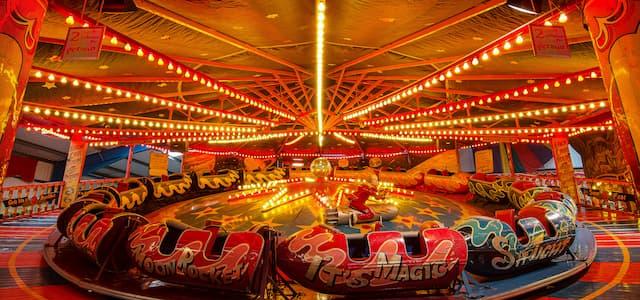
Victory for last operational Second World War motor boats
The last remaining fully operational high-speed World War II motor boats have been saved for the nation today with the help of a £580,000 grant from the National Heritage Memorial Fund (NHMF).
When built, they were the fastest boats of their type in the world. One of the boats, MGB 81, was active during the US landing at Omaha Beach during D-Day and received the battle honour ‘Normandy 1944’. The other, HSL 102, is the only surviving example of the 100 class high speed launch and was stationed at RAF Calshot during the Battle of Britain, retrieving shot down airmen from the sea. Throughout the duration of the war, HSL vessels saved a total of 10,000 airmen of many nationalities.
The money will enable Portsmouth Naval Base Property Trust (PNBPT) to purchase the gunboats. Although both were outstanding examples of British naval engineering, they only had a life expectancy of 20 years. They have now been restored to original working condition and will go on permanent display at Gunwharf Quays Marina in Portsmouth. It is hoped people will get the opportunity to charter the boats and experience what it was like for the crews driving at full speed 70 years ago.
Lt. James Shadbolt MBE and a veteran of Royal Navy's 8th Motor Gunboat Flotilla, said: “I’m delighted these two motorboats will now be safe-guarded. Organisations like NHMF and other generous donors play such a vital role in protecting our precious heritage and those of us who particularly cherish these boats are very grateful. It’s wonderful to know that future generations will be able to experience first-hand these extremely exciting machines just as we did as young men during the war."
Bob Bewley, Director of Operations at NHMF, said: “The purchase of these boats is an important part of a continuing success story and just what the NHMF was set up to do - to defend the most outstanding parts of our national heritage at risk as a memorial to those who have died for the UK. These gunboats are so integral to our rich seafaring history. They can now join other great British naval achievements, such as Nelson’s HMS Victory and the Mary Rose, which have been saved thanks to the unique ability of the NHMF to act quickly as the ‘fund of last resort’ over the past 30 years.”
Peter Goodship, Chief Executive of the PNBPT, said: “These unique craft are a legacy to the heroism of those who crewed them during World War II. Both boats made significant contributions to the War effort and saved the lives of many sailors and airmen. The Trust is grateful to all those who contributed, especially the National Heritage Memorial Fund, without which this would not have been possible.”
History of the Boats
The boats were designed and built by the British Powerboat Company, which later went on to build the famous Supermarine Spitfire. The company’s founder, aviation and powerboat pioneer Hubert Scott-Paine, along with T.E. Shaw (known as Lawrence of Arabia), pioneered these fast manoeuvrable craft for British military use. In fact, T.E. Shaw personally undertook the testing of the HSL prototype.
MGB 81 - After the war, MGB 81 was disposed of by the Royal Navy. In late 1945, she was sold to a private owner, achieving notoriety for being ‘arrested’ as part of a smuggling operation in 1958 and then was sold for scrap. Later, she became an accommodation barge for a sailing school and then spent some years as a house boat before restoration in 1988.
HSL 102 - During a two month period HSL 102 is recorded as having saved 38 men from the North Sea including the crews of two German bombers. After restoration in 1996, she was re-launched by HM Queen Elizabeth, the Queen Mother, and performed as a Royal Barge for both HRH Prince Phillip and HRH the Duke of Kent. She went on to star in the film Enigma with Kate Winslet in 2001.
Notes to editors
Funding
The acquisition cost £750,000 which was made up of five funding streams:
National Heritage Memorial Fund - £580,000 (77 per cent of the total value)
Private donations - £90,000
Fundraising - £50,000
PRISM - £20,000
Coastal Forces Trust - £10,000
Portsmouth Naval Base Property Trust
PNBPT was set up in 1985 by the Ministry of Defence and Portsmouth City Council with the initial purpose of taking responsibility for the long-term preservation of the historic south-west corner of Portsmouth Naval Base.
The Trust now owns and manages several of the attractions within the Historic Dockyard and Portsmouth Harbour, including Action Stations, Explosion Museum of Naval Firepower, Harbour Tours and the Dockyard Apprentice Exhibition. Since its foundation, it has also established one of the UK’s largest collections of small naval craft, many of which are on display within the Historic Dockyard. These include the former barge of Commander-in-Chief Naval Home Command, a harbour defence launch, gigs, whalers, cutters, small dinghies used for Royal Naval sailing training, and a World War II landing craft. The Trust recently inherited the former British Military Powerboat Trust’s collection, which includes a small Air Sea Rescue craft and a motorboat tender from Ark Royal.
HLS 102 and MGB 81 will represent the Trust’s most significant acquisitions to date.
Further information
Natasha Ley or Alison Scott, NHMF Press Officers,
Phone: (020) 7591 6143 / 6032 Mobile: 07973 613 820
Email: natashal@hlf.org.uk / alisons@hlf.org.uk.

